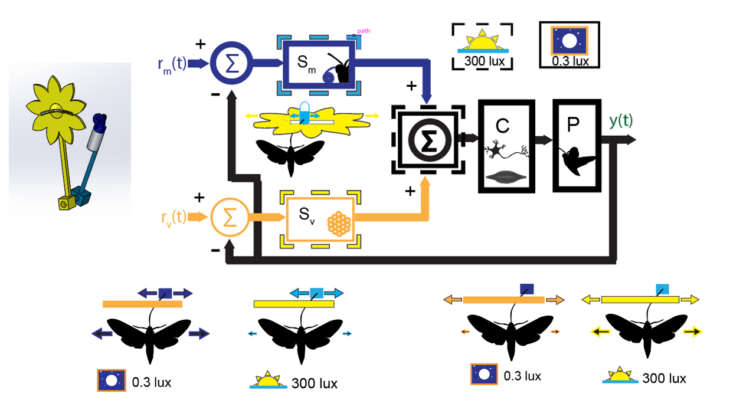Hawkmoths such as Manduca sexta use proboscis mechanosensation as well as vision to track moving flowers while hover-feeding. In crepuscular moths, this poses a challenge since vision depends heavily on background luminance. If mechanosensory motor-response does not compensate, the same multisensory control can reduce flight performance. Using a two-part robotic flower to provide conflicting sensory cues to hover-feeding moths, we demonstrated that vision and mechanosensation combine linearly across 4 orders of magnitude of illuminance. In addition, visual motor responses decrease with decreasing illuminance, while mechanosensory responses increase, both changing nontrivially with frequency of movement. The result is a well-maintained behavioral performance across light-levels.
